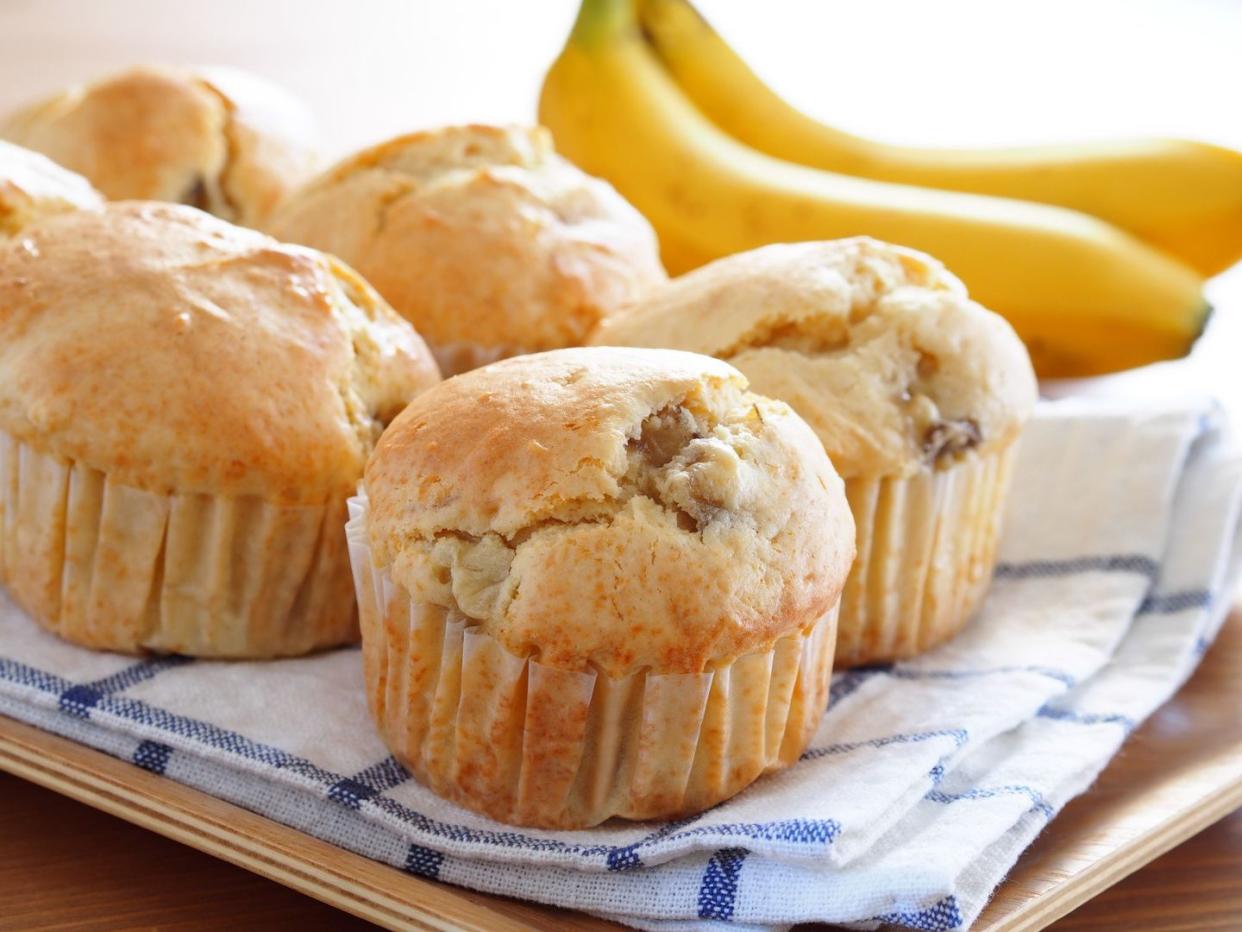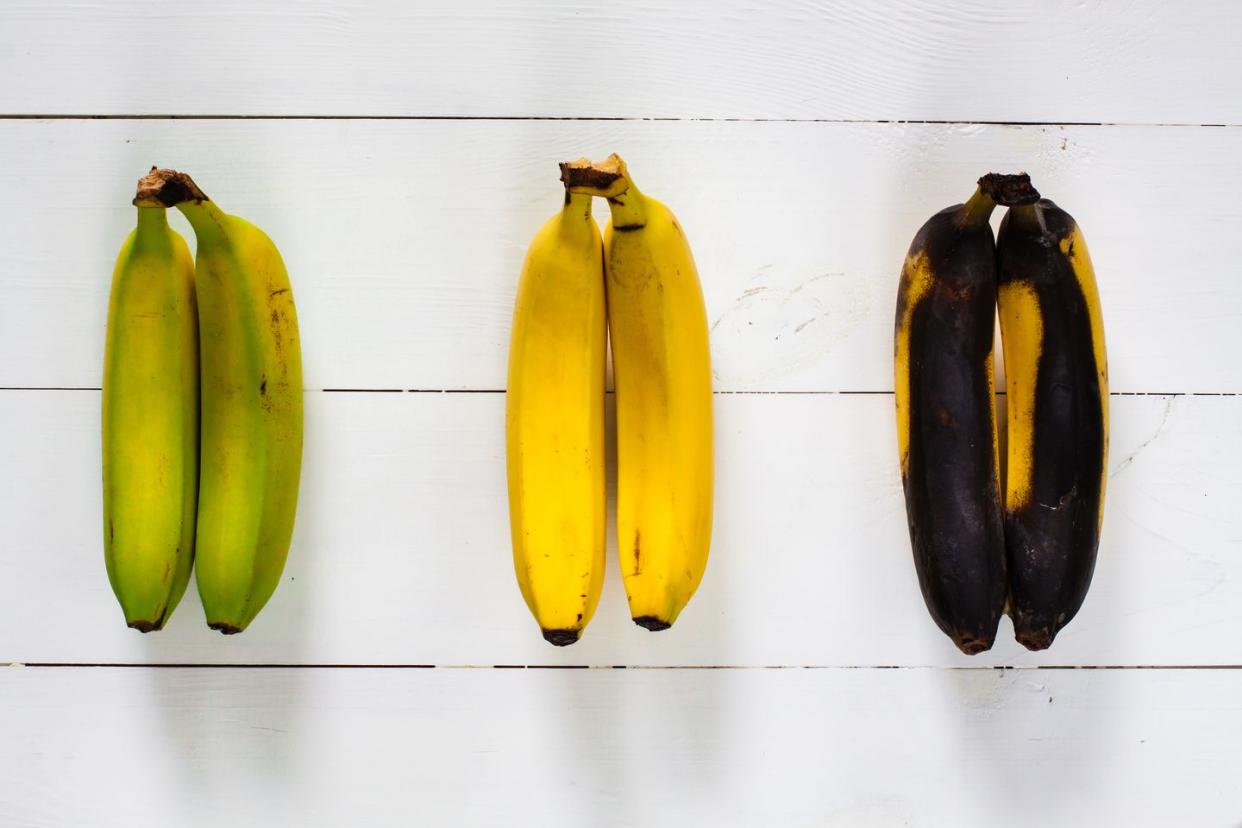This Is the Fastest Way to Ripen Bananas
It can feel like forever waiting for bananas to ripen—especially if you're craving banana bread! But if you have a green bunch on your hands, all is not lost! Here, we'll show you some easy tips and tricks for how to ripen bananas when you're in a pinch. Even if you're not big on bananas for snacking (Ree Drummond definitely isn't a fan!), you can still use ripe bananas the next time you want to make scrumptious banana muffins or healthy smoothies. You can even use them as a tasty way to elevate pancake mix. However, if your bananas aren't ripe yet, there's no need to scrap your baking plans. We have some simple ways to ripen bananas, including a paper bag approach and a microwave method that will do the trick!
But first, how can you tell if a banana is ripe? Just like how avocados ripen over time, bananas are another fruit that ripens naturally. A ripe banana is yellow (with some brown spots) and just starting to soften, but it still holds its shape. At that stage, it's just right for a fruit salad because it won't get mushy. The more brown speckles, the riper the bananas, the sweeter they'll be! Once you see your bananas turning completely brown and soft, that means they're overripe—which is just how you want them for making homemade hummingbird cake or other baked goods.

To help you speed this process along, read on to find out more about how to ripen bananas. And don't forget that once ripe, you can freeze bananas so they're ready whenever the craving for banana bread strikes!
What causes bananas to ripen?
Bananas produce a natural plant hormone called ethylene that ripens the fruit. It works by converting starch into sugar, which gives the bananas that soft texture and sweet taste. They start off bright green in color and continue to ripen over time—gradually becoming yellow, then yellow with spots, and finally brown.
How do you ripen bananas for baking?
When the craving for banana bread hits, your best option for ripening bananas is in the oven. This quickly softens the banana and helps to bring out the naturally sweet flavor. You don't even need to peel them! Of course, if your oven is occupied, you can also use the microwave to ripen bananas. But note that while this method will help soften the bananas, it won't change the flavor so you don't want to use very green bananas for this trick.
Oven Method: Put unpeeled bananas on a baking sheet and place in the oven at 300˚ until the skins turn black, 15 to 20 minutes. The flesh will be sweet and soft—and perfect for baked goods.
Microwave Method: Pierce an unpeeled banana all over with a fork. Microwave for 30 seconds, then check if the banana is soft enough. If needed, continue to microwave in 30-second intervals.
How do you ripen bananas for eating?
These tips will help the process along:
Keep the banana bunch together: Separating bananas from the bunch stalls the ripening process. By keeping the bunch intact, your bananas will quickly start to ripen all at the same time.
Store bananas in a warm spot: Try placing your bananas next to a heater or on top of the refrigerator. They'll ripen even faster.
Use a paper bag: Place bananas in a brown paper bag and loosely fold over the top. If you have other ripe fruit, like apples or avocados, place them in the bag as well. The ethylene gas will circulate and ripen your fruit within 24 to 36 hours.

How can you save ripe bananas?
If you bought too many bananas and they're already starting to turn brown (it happens to all of us!), you can still save them from spoiling. First, try storing your bananas in the fridge. Even if the peels start to turn black, the flesh should remain soft and ripe for up to five days. If your bananas are already brown, peel them, pop them in a resealable plastic bag, and store them in the freezer. You can use them straight from the freezer for smoothies, or blend them in a food processor with a splash of milk to make "nice" cream.
Can you use green bananas?
Believe it or not, you can eat underripe green bananas—they're typical in Caribbean cooking. You don't want to eat them raw, though; green bananas are firm and starchy. They're best when cooked like plantains: boiled and mashed, fried into chips, or stirred into stews.
